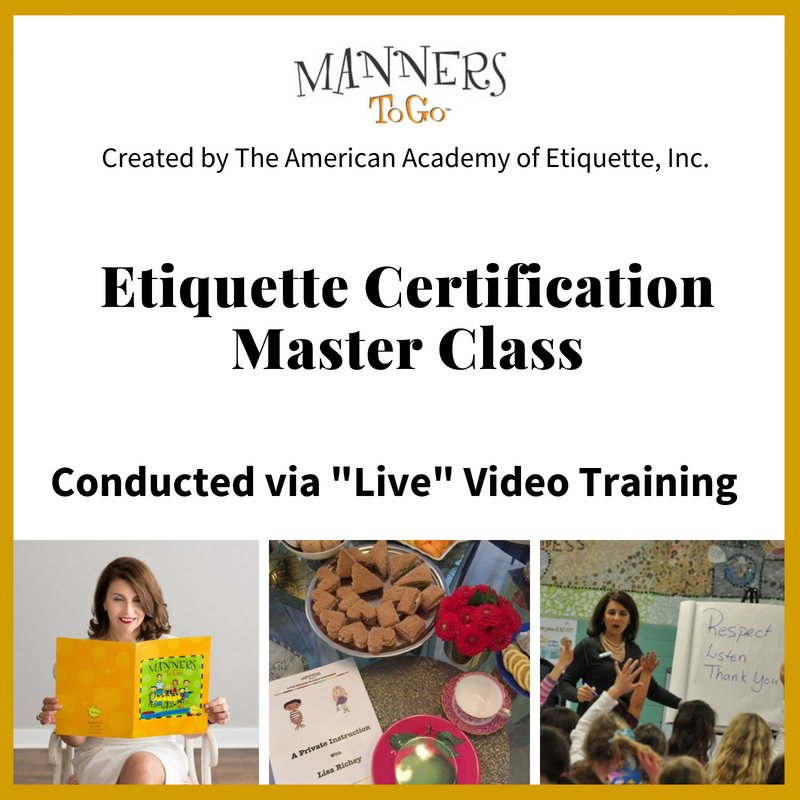Every etiquette expert needs to teach their students about these basic social graces
Children need your help to feel comfortable in all types of social situations.
Teaching children about the important social graces will allow them to flourish and grow with the world.
Social Graces Are the Polite Manners That Children Can Use in Everyday Life.
Teaching children social graces is essential because it ultimately helps children feel more confident.
By using social graces, they are able to build their confidence and feel more secure in their actions.

Social graces are so important to have as a child. Children feel more comfortable with their actions and words when they know what to do and how to behave.
That’s why taking the time to teach social graces as an etiquette expert is so important.
You might be asking, “ what should I focus on as I start to plan my topics to teach during my next etiquette class?”
1. Eye Contact
Maintaining eye contact is very important. It not only shows respect for the person that you are talking to, it also shows that you are interested in the topic they are talking about.
Eye contact is a form of connection between people that cultivates commitment and appreciation.
2. Avoid Interrupting
Teach children to refrain from interrupting. Fighting against that habit will allow them to establish patience. It will help them realize that their needs and desires aren’t always going to be the first priority.
3. Basic Conversation Skills
Basic conversation skills are a fundamental part of communication.
Children should know:
- How to take turns in a conversation
- When to listen to what the other person is saying
- When to respond appropriately
- How to stay on topic
- How to read nonverbal cues, like body language
Children may struggle with these skills because of their impulses of excitement. They may interrupt a conversation because they’re passionate about the topic. While they mean well, their actions are translated differently.
Without nonverbal cues, children lack basic conversation skills because they’re unfamiliar with certain gestures and what they mean. And that creates a recipe for social awkwardness and stress when making friends or working with others.
Luckily, there are ways for you to guide your students around these social roadblocks.
By practicing scripted examples of strong conversations, children will understand the social graces and nuances that matter. They’ll learn that asking questions keeps others engaged and shows that you’re interested in what they’re talking about.
As a certified etiquette expert, you can help children brainstorm lists of phrases or words they can say in a conversation in order to sound engaged.
4. Pay Attention
As an etiquette expert, it is as important for you to be present in teaching as it is for children to be present in learning. While the process of learning social graces is ongoing, they are very aware of others’ actions.
Children can tell when you’re not in the present moment with them. This can result in a loss of connection between you and the children.
Social graces involve being in that present moment. Your job as an etiquette expert is to help support that! The more you are there with your students, the more they’ll pick up on how you act.
By demonstrating zero distractions and full attention, you’re teaching your students to be present in conversations and situations.
5. Body Language
As I mentioned earlier, human beings read nonverbal cues during situations. That includes body language!
It is imperative that children understand that our bodies reflect our attitudes. The Manners To Go lesson plans and curriculum has scenarios for them to demonstrate how positive and negative posture affects a situation.
Maintaining a tall posture, with shoulders back and your chin up suggests that you are paying attention to what is going on around you. In this position, children look more engaged and ready to participate.
Practice getting into attention postures with your students. These postures may also benefit the student’s engagement in your manners class.
6. Introduction Skills
By teaching children how to introduce themselves, you’re teaching them how to be confident and self-assured.
At first glance, children see introducing themselves as intimidating and uncomfortable. That’s why it’s your job as an etiquette expert and coach to make introductions seem easy!
Teach your students the importance of eye contact and smiling during introductions.
It is important to practice these introduction skills with your students. By doing so, you’re able to help them in areas they may be struggling with while also letting them know what they are doing well.
7. Thank You Notes
Learning how to give thanks is crucial for children.
Writing thank-you notes or emails is a foundational skill that teaches children the meaning of gratitude.
Inform them of what situations require thank you notes. Things like presents, cards, and even after interviews, all classify as reasons to give thanks to someone.
8. Table Manners
Table manners most likely will be your most requested topic to deliver as an etiquette expert and coach.
It is important to remind them of the social graces of eating in public places.
By teaching children these basic table manners, you are allowing them to implement these skills in their own social life:
- Keep your mouth closed while chewing food
- Hold utensils correctly in your hands
- No shoveling or stabbing at food
- Wash your hands before eating
- Do not touch your face or other parts of your body at the table
- Use your napkin to wipe your face
- Keep a tall posture at the table
- Don’t put your elbows on the table
- Avoid reaching across the table for a plate
- Ask someone to pass you a plate or dish


Here is a FREE Guide to Help YOU Start a Business Teaching Manners to Children
CLICK THE IMAGE TO GET THE DOWNLOAD RIGHT NOW
Here Are Your Next Steps

Get to Know Manners To Go™
Most likely, you will want to get to know us. Feel free to call or email us. Click on the links below. We are happy to discuss the details with you.

Decide on the best training option for you
We offer two trainings to become certified to teach manners to children:

Option #1:
“Live” Video Training
If you are looking to start immediately and save money on travel and time, then this is your best option.You choose the dates of our trainings. Most choose to have their sessions once a week, others twice. This is a “live” and private training. It is NOT self-guided.

Option #2:
Two-Day In-Person
PRIVATE Training. That’s right, we meet in person, the two of us and our focus is completely on your business. Click the image above or follow the button below to learn more and to see a list of cities available for your training.

Receive the curriculum and book your training dates
Upon payment, you receive the curriculum. Next, we will send an email asking you to schedule your first training date.



 Lisa Richey provides etiquette programs to businesses, schools, and individuals.
Lisa Richey provides etiquette programs to businesses, schools, and individuals.



